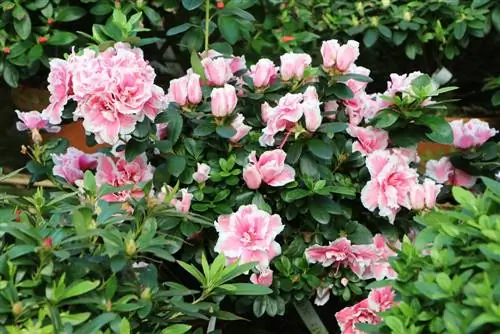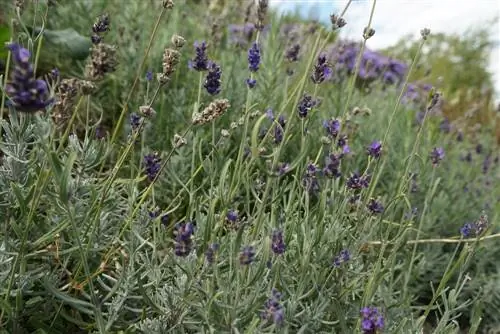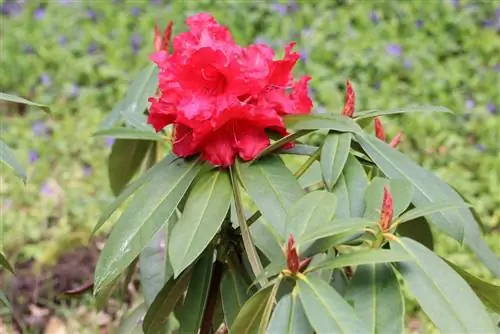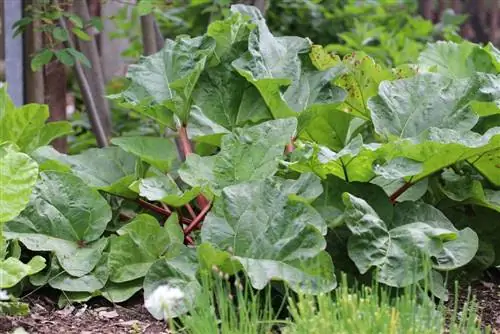- Author admin [email protected].
- Public 2023-12-17 03:39.
- Last modified 2025-01-24 12:45.
Azaleas are rhododendrons and can be a real eye-catcher thanks to their splendid flowers. However, you need the right location for this. Various factors must be taken into account here.
Room or outdoor space
When it comes to azaleas, a clear distinction must be made between varieties for outdoor use and indoor azaleas, because the different variants also have very different requirements for the location. Azaleas prefer a semi-sunny to shady location for indoor cultivation, while outdoor azaleas thrive best in sunnier locations.
However, with regard to other location-related factors, care should be taken when selecting the right variant. This doesn't just apply to culture indoors or outdoors. The final height of the plants also provides information about which locations they are suitable for.
Indoor Azalea
Indoor azaleas are more sensitive to light and should therefore not be placed in direct sunlight. It is therefore beneficial if a distance of at least one meter is maintained for south-facing windows. However, the plants can still be placed directly on the window sill if the windows face east or west.
To the south, however, care should be taken to ensure that the plants are not directly in the midday sun. In addition, it should be avoided that the plants are too dry. Heating air or air from air conditioning tends to dry out the leaves and soil, which can cause significant damage.
Outdoor azalea
When choosing locations for outdoor azaleas, care must be taken to ensure that they receive as much light as possible, but are also not in the blazing sun. Otherwise the flowering power will be reduced, as outdoor azaleas require a comparatively large amount of sun.
Permeable soil
Waterlogging is difficult for rhododendrons to tolerate, so when it comes to location, you should also make sure that the azaleas only stand in depressions on soil that is well-drained or has drainage.
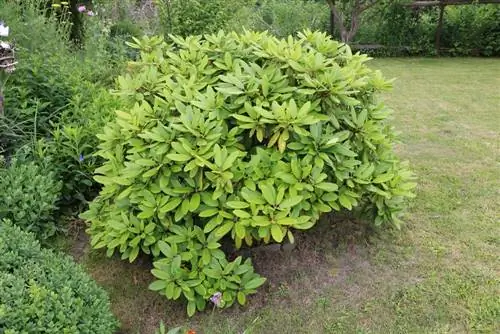
Light
It's not just the direction of the compass that needs to be taken into account when it comes to light. The surrounding vegetation also plays a role. Outdoor azaleas need as much light as possible to develop their full blooms. Surrounded by taller and therefore shady plants, however, the flowering power falls short of expectations, especially with low varieties.
Protection
Protected locations are especially important in winter. Strong winds or accumulating rain can be damaging to the plants. Therefore, care should be taken to ensure that larger plants - such as a hedge - or fences, walls and walls provide protection from this.
Tip:
Varieties A short distance from the house and planting on the south or east side usually protect against cold winds. Alternatively, the azalea can also be grown in a pot so that it can be moved if necessary.
Substrate
Just like the position of the site, the nature of the substrate also plays a role. The earth should meet the following factors:
- easy
- humus-rich
- permeable
- sour to slightly sour
A pH value of 4.5 to 5.5 is ideal. If there is no location in the garden with these conditions, there are two alternatives. On the one hand, the earth can be replaced selectively. Rhododendron soil, for example, is suitable. On the other hand, the plants can also be cultivated in pots. This also makes wintering easier, which is particularly advantageous in regions with hard and long winters.
Temperatures
If the plant has to change location, care should be taken to keep the temperatures as constant as possible or to adapt slowly. The plants do not tolerate rapid temperature changes very well.
Tip:
The brighter the plant is, the warmer it can be. Otherwise, leaf loss and increased susceptibility to diseases must be expected.

